The Last Train from North Port
by Julie Peters
I was one of the nine Cogan kids who lived in the old general store on the corner of Ross and Raglan Streets. My grandparents had the business from the 1920s until it closed in early 70s. This area was prone to flooding.
Before they bought the shop in Ross Street, Richard Hennessy Cogan, with his brother, had a woodyard in Ingles St, a business set-up by their grandfather, William Cogan.
We didn’t own a car and living less than 100m from North Port Station, the park and the station were our playground and the railway our main mode of transport for visiting family, shopping in the city, work for Dad, school, university and my first job. Dad grew up, living in this shop and had fond memories of steam trains on the line, when he was a child. We were so close to the station that Dad didn’t usually leave the house until he heard the railway boom gates at Bridge St. Of course, he then had to run and seemed to panic that he’d miss the train, every day.
I loved photography and started with our family 620 Brownie Box Camera. My next big purchase was a toy 127 camera I bought in Coles in Swanston St. My main subjects were family, the parks, trains and cityscapes.


Late 1960s, our train billycart (David and Mary).
My first job was in television and it involved shift work, so I often got to catch the first train. I think it was about 05:45 because it got me to work for a 6:30 start. Once I had a job, one of my first purchases was a decent camera, a Pentax 35mm Spotmatic F. I loved the improvement in my photography. I carried it almost everywhere. My subjects didn’t change much, family, friends, cityscape, landscape.
The Sandrigde to Melbourne railway, 1854, was the first in Australia. The Age sponsored stream trains to celebrate the 125th anniversary in 1979. Of course, I was there with my camera.
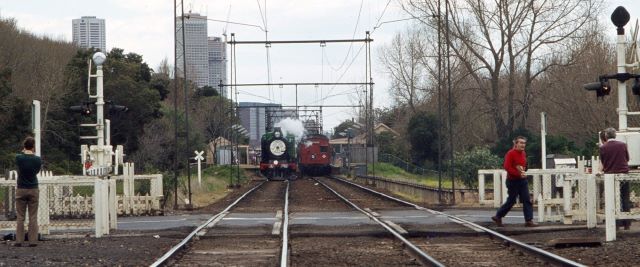
Because our family had relied on the railway for so long, I was very disappointed when it was closed down in 1987. The railway right-of-way between Clarendon Street and Queensbridge Road was sold. That’s where Crown Casino is today.
The train trip from North Port to Flinders St took 4 minutes. The 109 tram that follows the old route until it gets to Clarendon Street takes up to 30 minutes, depending on traffic. It represented social and psychologic closure for me, so I documented the pulling down of the stations, to build the lower tram platforms.
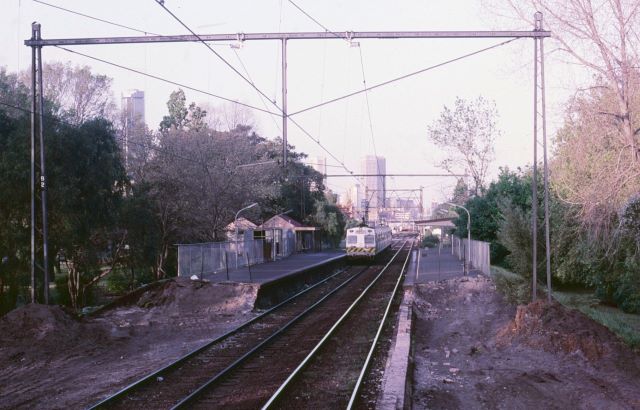
The old railway gauge was 5’3” (five foot three inches) and the tram gauge is 4’8” (four foot eight inches). They achieved the change of gauge by leaving the outer track where it was and moving the inner track seven inches closer to it.
So many of our family have lived in and around Port and South Melbourne since the 1860s, that we feel very connected to the area. One of the Cogan’s was mayor of South Melbourne in the 1930s. There has been a huge change in the demographics of the area. Port was considered very rough right up until the 1970s. It had more pubs per head of population than any other suburb. It was considered much rougher than South Melbourne or St Kilda. In the 1970s, I found people were nervous of me when they found out I lived in Port. And remember the Port Melbourne Football Club, 150 years old this year, was never invited to join the VFL, unlike more sedate teams like Collingwood.
But I’m sure you can tell I have a soft spot for Port. I’m the only one my family still here. I think I was allowed to stay because I pretended to gentrify when the suburb gentrified.
Julie Peters, PhD, BSc.
(All photos by Julie Peters unless otherwise noted)

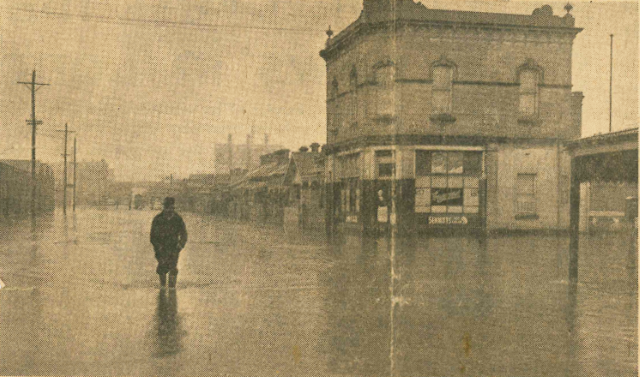
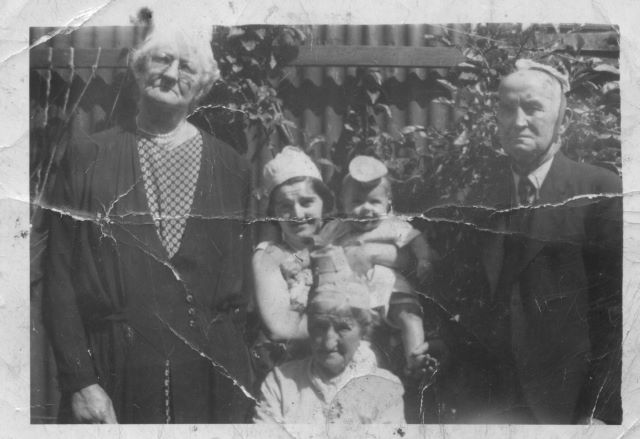
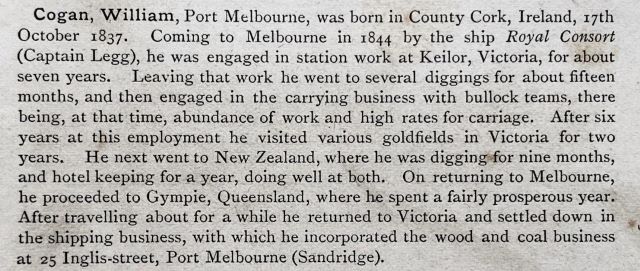
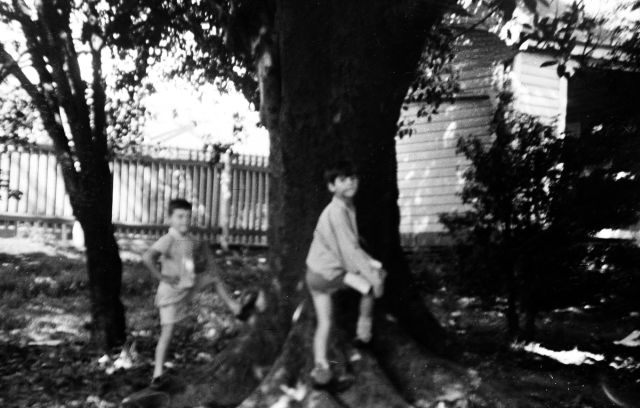
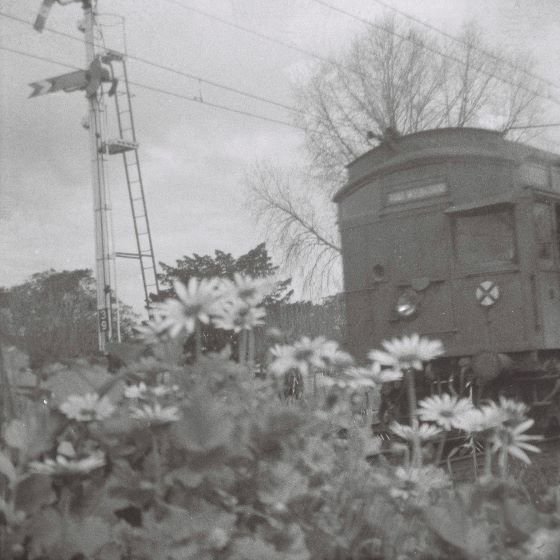
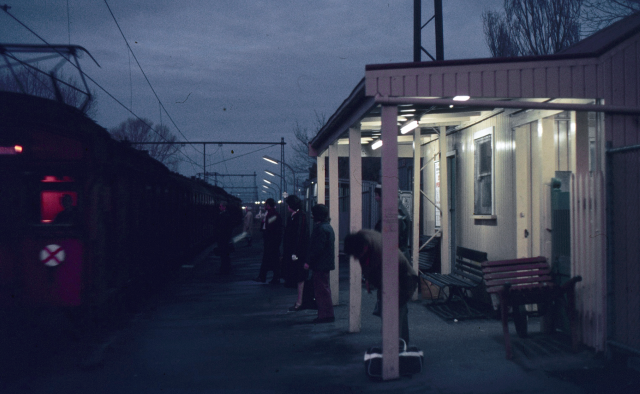
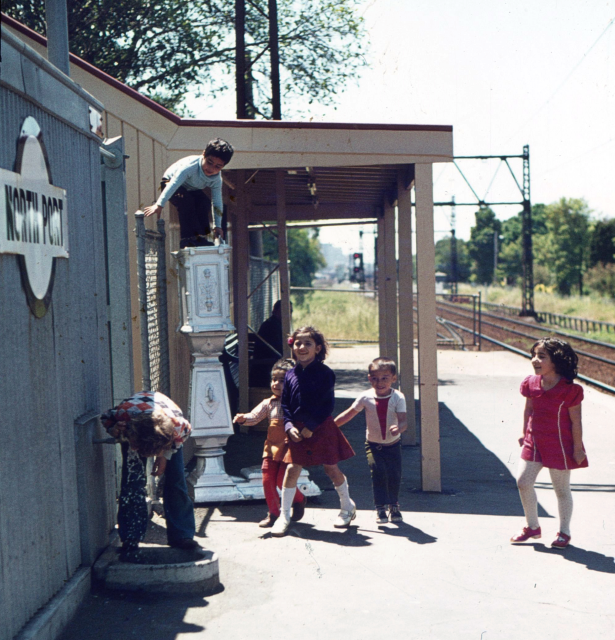
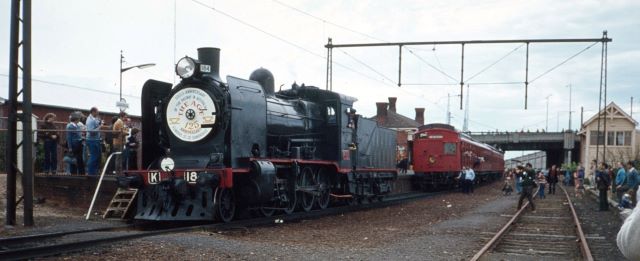
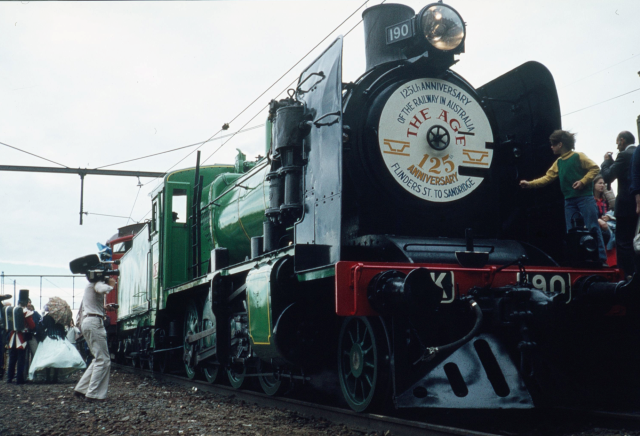
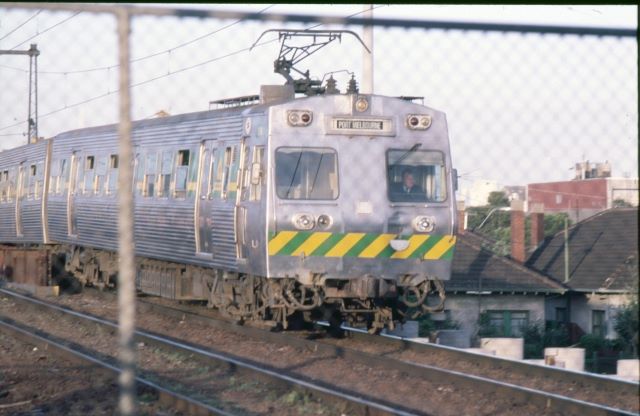
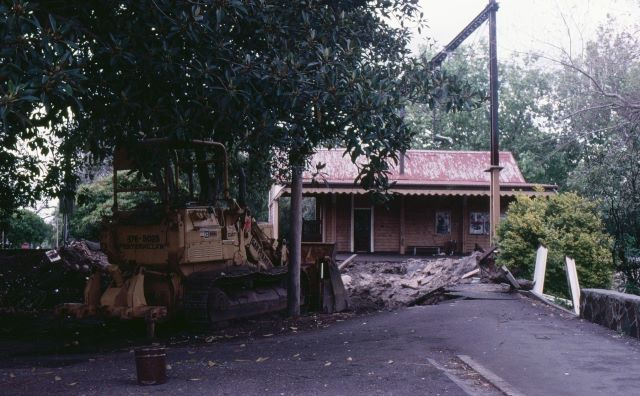
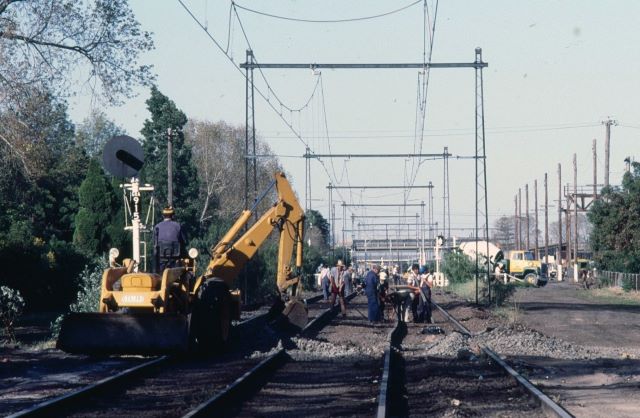
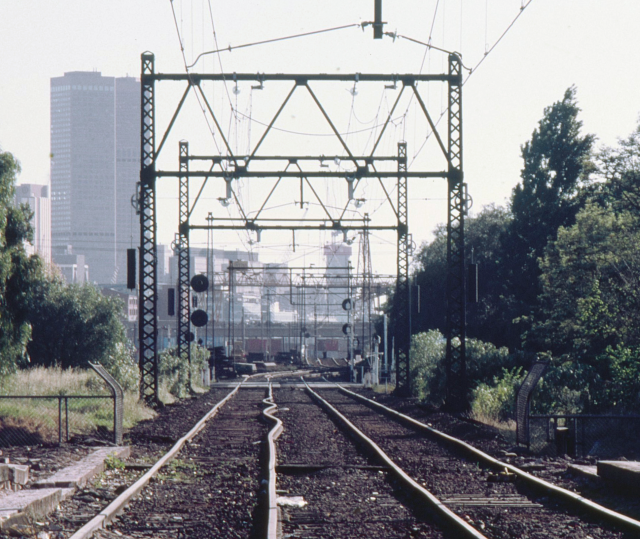
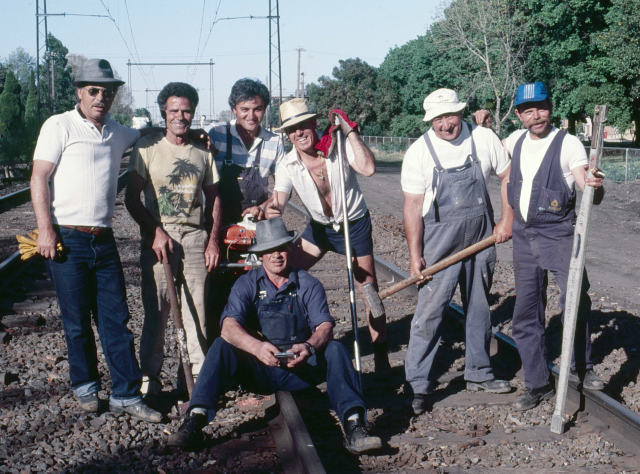
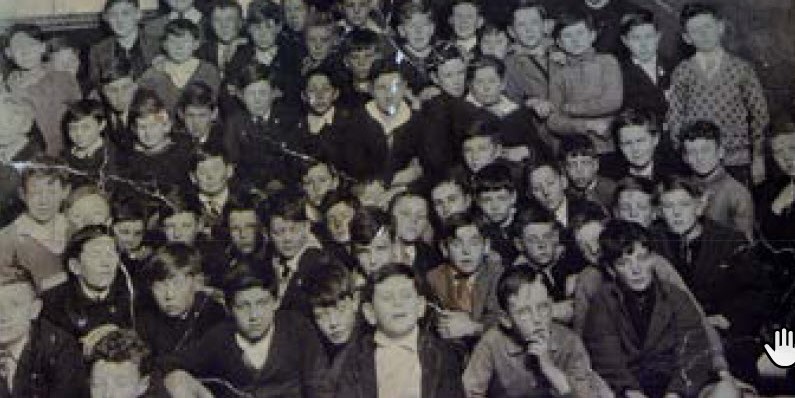
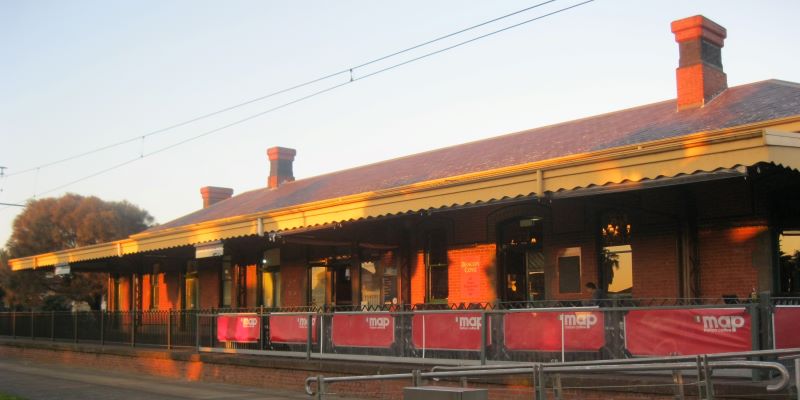
4 Comments
pierre
Hiya Julie! Fantastic job of documenting our playground!
Our family lived in Ross street in the house next door to Julie’s grandparents & my mum & Julie’s mum were besties, so it seemed only natural that at least some of our mob – eventually 5 of us while we lived there – would become friends of the big mob next door. In my case it was Julie & I who became firm friends for our early years up until our sixth arrived which eventually forced a move to the northern suburbs. We tried to keep a friendship going but the distance soon took its toll & we’ve been estranged for a few decades, mainly due to me relocating to NSW for much of that time.
Happily, we’ve reacquainted & now I’ve come back to St Kilda, only a few kilometres from Port so we’re getting used to the idea of hanging out again.
In NSW, the introduction of light rail has led the charge in encouraging folks there to more-readily adopt public transport so I am pleased & surprised to find how well-serviced the south-east of Melbourne is by PT, light rail & busses.
Julie Peters
Thanks Pierre, great memories. If my calculations are correct, we met at 2-year-olds. The parks along the railway were definitely our play ground.
Tom Moloney
So many memories, Julie.
Going into the shop from next door for a loaf of bread, a tin loaf, half of a larger loaf when broken, had one convex & the other a concave end.
Mum always got a concave end as we kids ate out a convex end.
Coupons for butter, carrying on after the war.
Your elderly grandparents serving in the shop.
Your grandfather had a black mole on the side of his forehead.
The large bluestone gutter crossing Ross st flooding after a storm.
The underpass at North Port flooding to the top & kids swimming in it.
The American army camped in Port footy ground, removing posts to underpass so they could drive their jeeps through to Bay st.
Early morning milk, grocery & ice delivery, for our ice chests (pre refrigerator), by horse & cart.
How we became accustomed to the odours from Dunlop Rubber & Kitchen’s soap factory.
Playing footy & cricket on the “Rockery” along the railway.
Seeing the old Red Rattler electric trains & the occasional steam train filled with new migrants all waving madly from the windows on their way to Bonegilla migrant camp.
The Saturday arvo trail of men across Raglan st from the Albion pub to the back lane wood yard SP bookie.
The street full of pedestrians walking to catch the train at North Port after work.
The OT soft drink carton factory in Ross st.
Kids playing cricket, with dust bin wickets, in the middle of Ross st & motorists waiting until we fielded the ball before they drove past.
Sleeping on the front veranda, I’ll not forget the night a drunk teenager stole a semi trailer, mounted the footpath, driving the truck under the shop wrought iron veranda, timber falling in towards my bed, he revving the truck, driving away & the shop veranda collapsing onto the footpath.
Of course the Port ground, home of the mighty Burras.
Jack Woodruff captaining the Port cricket team, later becoming the Mayor of Melbourne.
Rock & Roll dances at Port Townhall, John Woodruff, ‘Johnie Storm”
The Sunday footy league, collecting beer bottles to sell to wood yard.
Later doing the scoreboard at these matches, a much more lucrative task.
Our brick paved back yards.
Margo dancing around a broom stick in neighbouring back yard other side.
Denzil, in the next house, had an attic above the rear garage full of comics, the Phantom, Dick Tracey etc, which read up in the attic.
The gas meter cupboard seats on verandas, the perfect place to chat to the neighbours as they passed by.
There was a culture of taking care of each other.
For a few bottles of beer any load of rubbish could be taken away by the local garbos.
I could go on….
Julie Peters
Wow! Tom that is an amazing set of memories. Being just a bit younger I can’t remember all of them. But I can remember others describing them. For example my mother was also very scared when the truck brought down the veranda. We certainly have a brick paved backyard. In fact I’ve recently built one in Bridge st. That subway was important for us.